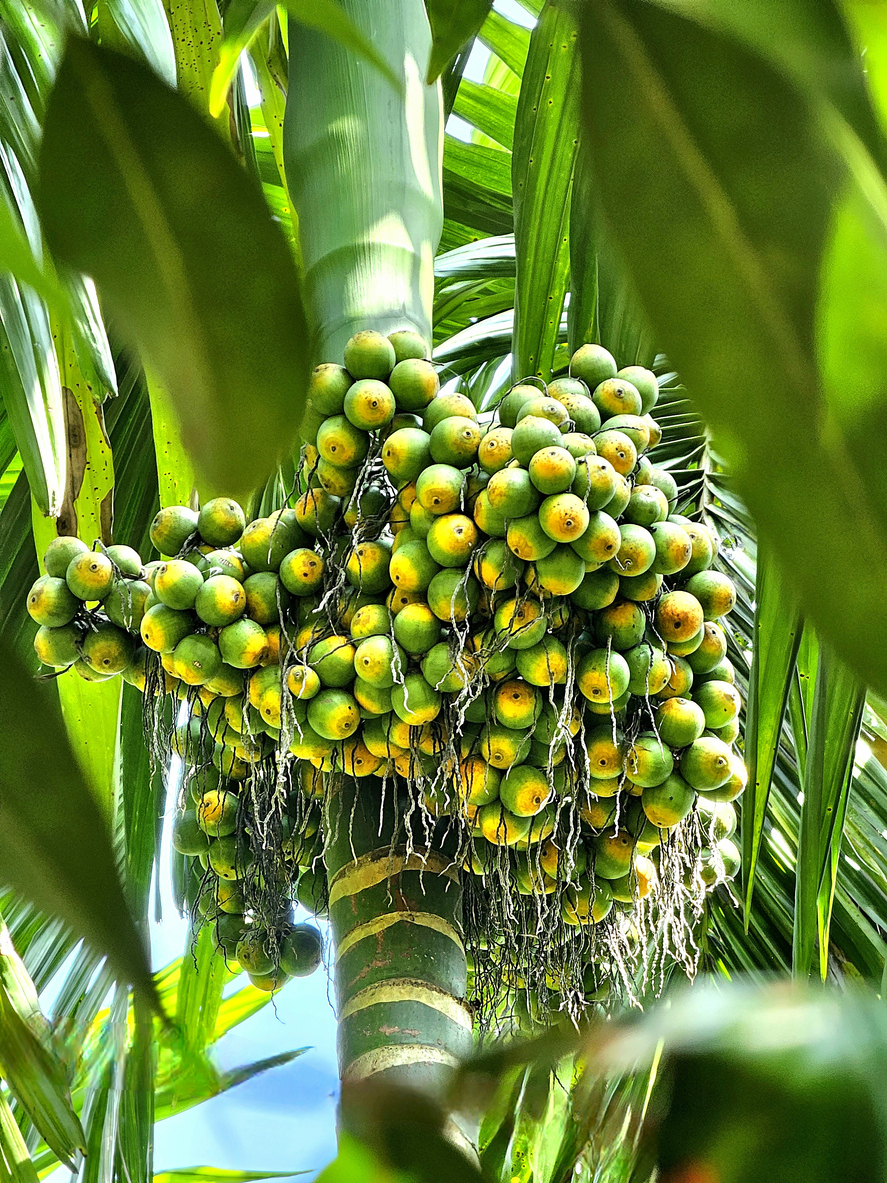Analyzing the Fluctuating Arecanut Price: Factors and Implications
Analyzing the Fluctuating Arecanut Price: Factors and Implications
Welcome to our latest blog post, where we dive deep into the fascinating world of arecanut prices! Are you curious about what causes those frequent fluctuations in price? Or perhaps you’re wondering how these changes impact not only farmers but also consumers and the overall market? Well, look no further! In this article, we’ll take a closer look at the various factors that influence arecanut prices and explore their wider implications. So grab your favorite beverage and join us on this captivating journey through the intricate web of supply, demand, and economic forces shaping one of nature’s most versatile crops. Let’s unravel the mysteries behind arecanut price fluctuations together!
Introduction to the Arecanut Industry
The Arecanut industry is one of the oldest and most prominent industries in India, with a rich history dating back thousands of years. Arecanut, also known as betel nut, is the seed of the areca palm tree, which grows abundantly in tropical regions such as India, Sri Lanka, Indonesia, and parts of Africa. It has been an integral part of Indian culture and tradition for centuries and is widely used in religious ceremonies, social gatherings, and medicinal purposes.
The Arecanut industry plays a crucial role in the rural economy of these countries. It provides employment opportunities to millions of people involved in its cultivation, harvesting, processing, and trading. According to recent estimates by the Food and Agriculture Organization (FAO), global production of arecanut stands at around 1 million tonnes per year.
India is the largest producer and consumer of arecanut globally. The states of Karnataka, Kerala, Assam, West Bengal, Tamil Nadu are major producers in India. Other leading producers include Bangladesh, Myanmar (Burma), Indonesia, Vietnam among others.
The arecanut market has always been volatile due to various factors that impact its production and supply chain. In this blog post we will analyze some key factors that contribute to fluctuating prices in the arecanut industry and their implications on farmers’ livelihoods as well as overall market trends.
Understanding Arecanut Price Fluctuations
Arecanut, also known as betel nut, is a widely consumed product in many parts of Asia and the Pacific. It is an essential ingredient in many cultural practices and rituals, including chewing betel quid and offering it as a token of hospitality. The global demand for arecanut has been increasing over the years due to its multiple uses in food, medicine, and cosmetic industries.
Like any other commodity, the price of arecanut is not stable and tends to fluctuate over time. This can have significant implications for both producers and consumers of arecanut. In this section, we will delve deeper into understanding the factors behind these fluctuations and their impact on the market.
1. Supply and Demand
The most crucial factor influencing the price of arecanut is the balance between supply and demand. When there is high demand for arecanut but limited supply available in the market, prices tend to increase as buyers compete for the available stock. On the other hand, when there is an oversupply of arecanut but low demand from consumers, prices tend to drop.
Several factors can affect both supply and demand for arecanut. For instance, changes in consumer preferences or health concerns may reduce demand for arecanut products such as paan (betel leaf wrapped with betel nut) or gutka (a mixture of tobacco with crushed betel nut). Similarly, natural disasters like floods or diseases affecting palm trees that produce betel nuts can decrease supply.
– Demand and Supply Factors
Demand and supply are two of the most important factors that determine the price of any commodity, including Arecanut. In this section, we will discuss how demand and supply factors impact the fluctuation of Arecanut prices.
Demand Factors:
The demand for Arecanut is driven by various factors such as population growth, consumer preferences, and economic conditions. Let’s delve deeper into these factors to understand their implications on Arecanut prices.
1. Population Growth:
With a growing global population, there has been an increase in the demand for food products. This has led to a higher consumption of traditional crops like Arecanut in countries like India and Indonesia where it is widely consumed. As a result, the demand for Arecanut has increased significantly over the years, leading to a rise in its price.
2. Consumer Preferences:
Consumer preferences play a crucial role in determining the demand for Arecanut. It is often used as an ingredient in many traditional dishes and also has cultural significance in certain regions. As consumers become more health-conscious, they tend to opt for healthier alternatives like Arecanuts instead of processed snacks or tobacco products. This shift in consumer preference can drive up the demand for Arecanuts and subsequently affect its price.
– Seasonal Variations
Seasonal variations play a significant role in the fluctuation of arecanut prices. The production and consumption of arecanut are highly influenced by seasonal changes, resulting in price fluctuations throughout the year.
The arecanut tree is mainly cultivated in tropical regions, where weather conditions have a direct impact on its growth and yield. Arecanut trees require warm and humid climates with regular rainfall for optimal growth. As a result, the monsoon season plays a crucial role in determining the supply of arecanut.
During the monsoon season, which typically lasts from June to September, there is an increase in the production of fresh arecanuts due to favorable weather conditions. This leads to an oversupply of arecanuts in the market, resulting in lower prices. On the other hand, during summers (March-May), there is a decrease in production as high temperatures can affect the growth and yield of areca palms. This results in lower supply and hence higher prices.
Apart from natural factors like weather conditions, cultural practices also influence seasonal variations in arecanut prices. For example, farmers usually harvest their crops during festivals or auspicious occasions such as Diwali or Pongal. This leads to an increase in supply during these periods, causing a temporary dip in prices.
– Government Policies and Interventions
Introduction:
The arecanut industry in India has been facing significant challenges due to its fluctuating price. The government has recognized the importance of this crop for the farmers and has implemented various policies and interventions to stabilize the price and support the growth of this sector. In this section, we will analyze the government policies and interventions that have been introduced to address the issue of fluctuating arecanut prices.
1. Price Stabilization Fund:
In 2016, the Indian Government established a Price Stabilization Fund (PSF) with a corpus of Rs 500 crores to provide relief to farmers from volatile market prices. The fund aims to protect farmers from distress sales during periods of low prices by providing them with a minimum support price (MSP). This intervention has played a crucial role in stabilizing arecanut prices, especially during times of excess production.
2. Minimum Support Price (MSP):
The MSP is set by the government based on factors such as cost of production, demand-supply dynamics, market trends, etc. It provides a safety net to farmers by ensuring that they receive a fair price for their produce even when market prices fall below their costs. A higher MSP also encourages farmers to increase their productivity, leading to an increase in supply and potentially stabilizing prices.
Implications of Fluctuating Prices
The fluctuations in arecanut prices have significant implications for both farmers and consumers. In this section, we will discuss the various consequences of these price changes.
1. Impact on Farmer’s Income:
Fluctuating arecanut prices can greatly affect the income of arecanut farmers. When prices increase, it can lead to a rise in profits for farmers. This can be beneficial for small-scale farmers who heavily rely on their crop as their main source of income. However, if prices decrease, it directly impacts the farmer’s income and can lead to financial difficulties. Fluctuating prices also make it challenging for farmers to plan their crops and investments effectively.
2. Consumer Affordability:
Arecanut is widely consumed across South Asia and Southeast Asia, where it is known by different names such as betel nut or supari. The fluctuation in its price has a direct impact on consumer affordability. When prices rise, consumers may find it difficult to afford this essential ingredient in their daily lives, especially those from low-income households who heavily rely on arecanut for cultural or medicinal purposes.
3. Market Instability:
Fluctuating arecanut prices create market instability and uncertainty among traders and buyers as they struggle to predict future trends accurately. This leads to hesitation in making long-term investments or decisions related to the crop, causing further fluctuations in the market.
– Effects on Farmers and Traders
The fluctuating price of arecanut, a popular cash crop primarily grown in India and Southeast Asia, has significant effects on the lives of farmers and traders. The arecanut industry is a major source of income for millions of people, particularly small-scale farmers who heavily rely on it for their livelihood. Therefore, any changes in the price of arecanut can have far-reaching consequences for these individuals and their communities.
One of the most immediate impacts that fluctuations in arecanut prices have on farmers is the uncertainty it brings to their income. Arecanut is typically harvested twice a year, and farmers often plan their expenses and investments based on projected earnings from these harvests. However, when prices drop unexpectedly, it can severely affect their financial stability and ability to cover basic needs such as food, education, and healthcare for themselves and their families.
Moreover, the unpredictable nature of arecanut prices makes it difficult for farmers to make informed decisions about future plantings or expansions. They may hesitate to invest in new equipment or technology or increase production if they fear another price drop that could result in losses. This hesitation can hinder the growth potential of not only individual farmers but also the entire industry as a whole.
– Impact on Local Economy and Trade
The fluctuating price of arecanut has a significant impact on the local economy and trade in producing regions. Arecanut, also known as betel nut, is an important cash crop for many countries in Asia, particularly India, Indonesia, Sri Lanka, and Bangladesh. It is extensively cultivated and traded within these countries and exported to other parts of the world.
One of the main impacts of the fluctuating arecanut price on the local economy is its influence on the income and livelihoods of farmers. In producing regions where arecanut cultivation is widespread, many small-scale farmers rely heavily on this crop for their livelihoods. The uncertainty surrounding its price can have a direct effect on their income and economic stability.
When arecanut prices are high, farmers can earn more profits from selling their produce. This increased income can stimulate economic growth in rural areas by providing farmers with more disposable income to invest in farm inputs or other businesses. Additionally, higher prices may attract more people to take up arecanut cultivation as a means of livelihood, leading to increased production and employment opportunities in these areas.
On the other hand, when arecanut prices fall below average levels, it can cause financial strain for farmers who may struggle to cover their production costs or repay loans taken for farming activities. This can result in a decline in investments towards improving productivity or diversifying into alternative crops.
– Challenges for Sustainable Growth of the Industry
The arecanut industry has been facing many challenges in its pursuit of sustainable growth. These challenges have hindered the efforts to stabilize and increase the price of arecanut, making it difficult for farmers and stakeholders to maintain a steady income. In this section, we will delve into some of the major challenges that the industry faces and how they impact its growth.
1. Climate Change Effects:
One of the biggest challenges for sustainable growth in the arecanut industry is climate change. Arecanut trees require specific weather conditions to thrive, such as high humidity and moderate temperatures. With global warming causing unpredictable weather patterns, these conditions become harder to maintain, leading to decreased production and quality of arecanuts. Erratic rainfall patterns also affect harvests, leading to fluctuations in supply and demand.
2. Pests and Diseases:
Arecanut trees are susceptible to various pests and diseases that can significantly reduce their productivity. Some common pests include mites, leaf-eating caterpillars, termites, etc., while diseases like yellow leaf disease can cause severe damage to plantations. These issues not only decrease yield but also increase costs for farmers who have to invest in pest control measures.
3. Lack of Technological Advancements:
The lack of technological advancements in farming practices is another challenge faced by the arecanut industry. Most farmers still use traditional methods of cultivation that require significant manual labor and may not be as efficient or cost-effective compared to modern techniques used in other crops.
Measures to Stabilize Arecanut Prices
Measures to Stabilize Arecanut Prices:
The fluctuation in the price of arecanut has been a major concern for farmers, traders, and consumers alike. It not only affects the livelihoods of arecanut farmers but also has an impact on the overall economy. In order to address this issue, various measures have been proposed and implemented by different stakeholders. Let’s take a closer look at some of the key measures that can help stabilize arecanut prices.
1. Government Interventions:
The government plays a crucial role in stabilizing arecanut prices through its policies and interventions. One such measure is Minimum Support Price (MSP) which ensures that farmers get a decent price for their produce even when there is a decline in market prices. The government can also provide subsidies on inputs like fertilizers and pesticides to reduce production costs for farmers.
2. Promoting Diversification:
One of the reasons for the volatility in arecanut prices is its over-dependence on just one crop. Promoting diversification by introducing intercropping with other crops like coconut or cocoa can help reduce risks associated with fluctuations in arecanut prices.
3. Improving Infrastructure:
Lack of proper infrastructure such as storage facilities, transportation systems, and market linkages contributes significantly to the fluctuating prices of arecanut.
– Promoting Diversification in Agriculture
Promoting diversification in agriculture is crucial for the sustainable growth of the agricultural sector and to ensure a stable economy. Arecanut, also known as betel nut, is a major cash crop in many tropical countries including India, Indonesia, and Sri Lanka. It has been an essential part of traditional medicine and cultural practices for centuries. However, with the fluctuating prices of arecanut in recent years, it has become imperative to explore ways to promote diversification in agriculture.
Diversification refers to the practice of growing different crops or engaging in multiple agricultural activities instead of relying on a single crop. This approach helps farmers mitigate risks associated with price fluctuations and natural calamities such as floods or droughts. It also enables them to tap into new market opportunities and improve their overall income.
The arecanut industry is highly vulnerable to price fluctuations due to various factors such as changing consumer preferences, market demand-supply dynamics, climate change, and government policies. As a result, farmers who solely depend on arecanut cultivation often face financial instability when prices fall below their production costs.
Promoting diversification in agriculture can help address these challenges by providing alternative sources of income for farmers. By cultivating different crops or engaging in allied activities such as dairy farming or poultry rearing, farmers can reduce their dependence on arecanut and have a steady stream of income throughout the year.








Comments are closed.